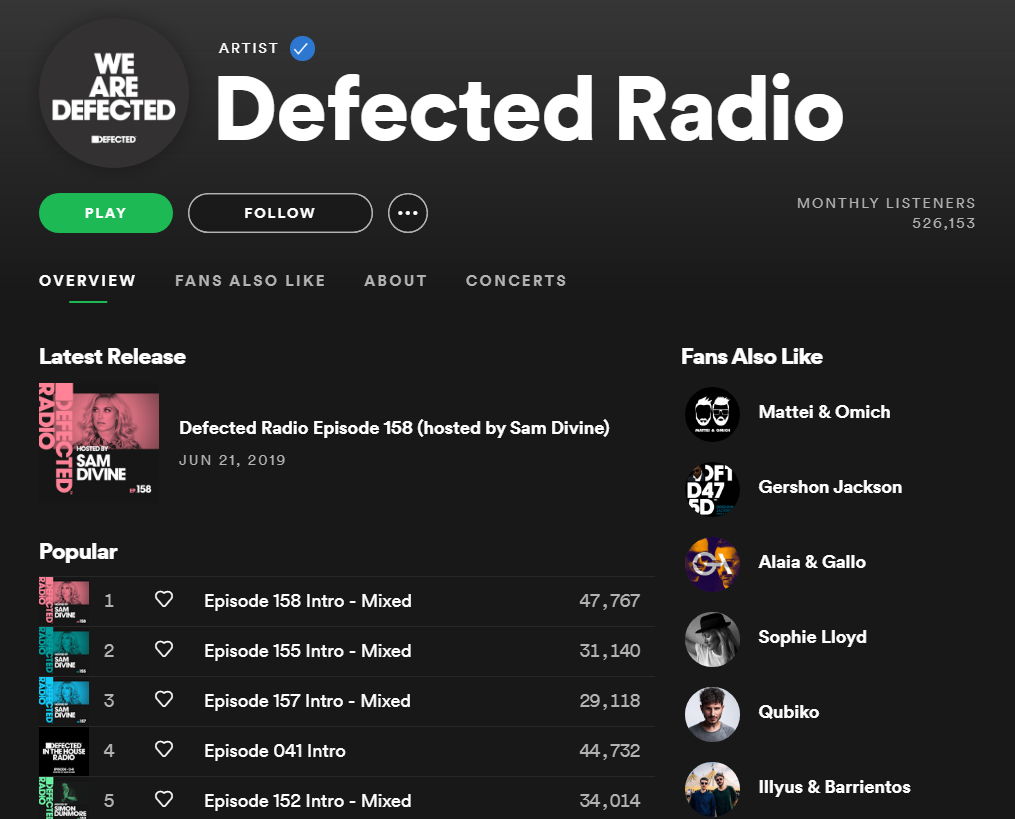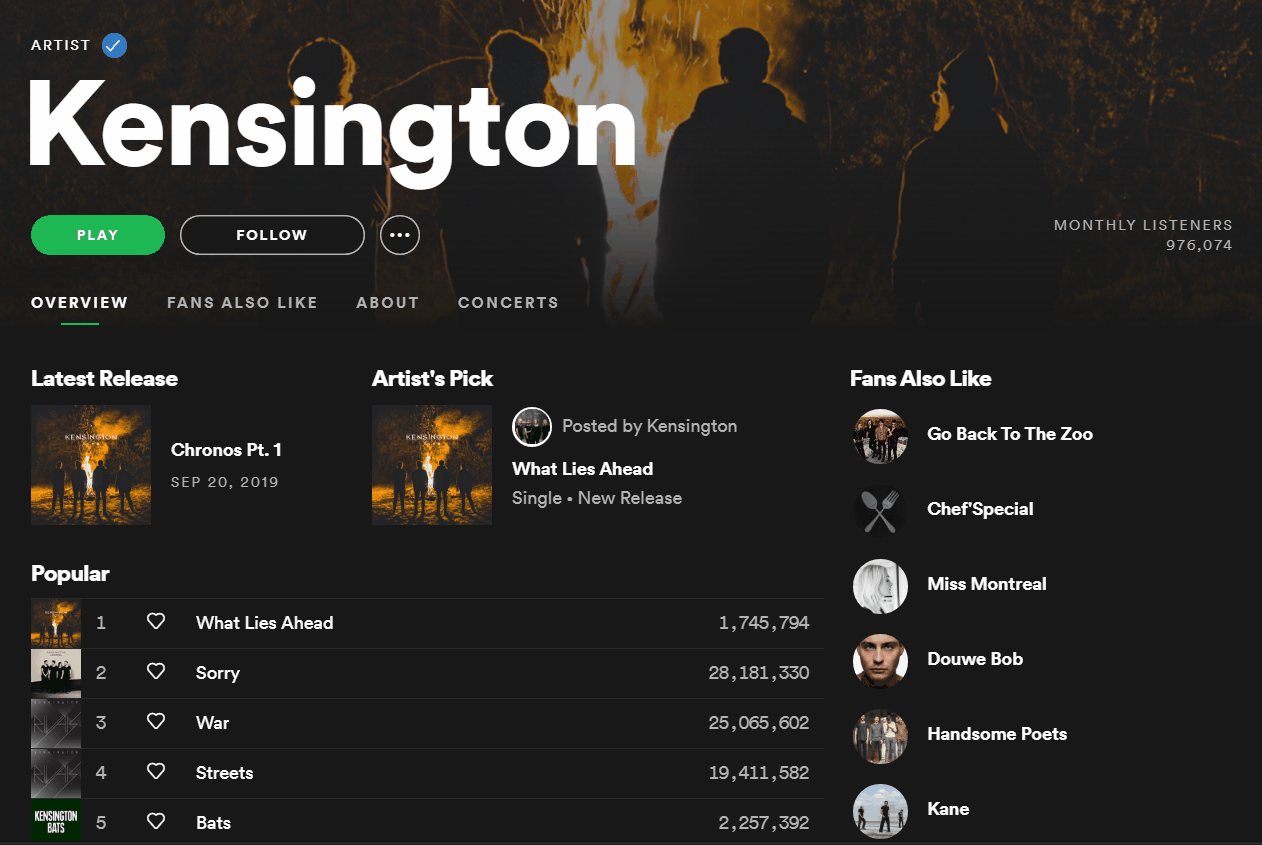Ticket shop
Easily embedded into your website
21 November, 2019 - 6 min. read
The popular streaming service Spotify is not only useful for the listener, but it is also a way for artists to distribute their music. They can do this by sharing their latest releases, but they can also be highlighted in personal playlists and the 'Artist Pick'. You might think that only musicians can have an artist profile, but you couldn't be more wrong; you can have one as an event organiser too. By claiming an artist's profile, you can gain access to loads more ways of promoting your event. In this blog, we'll show you what these options are and how you can use them!
An artist's profile on Spotify provides 'musicians' with many more possibilities; their music could reach up to 180 million Spotify users after all. There are some other advantages to an artist profile, however!
You will get the well-known blue checkmark on all social media channels which indicates that (in this case) Spotify has verified you as an artist. The blue checkmark projects a sort of authority and is considered to be a mark of reliability on the internet. It’s not without reason that a considerable number of companies active on social media would love to have the checkmark on their Facebook page or their profile on Instagram.

You can add profile photos and banners, write an artist bio and personalise your artist profile. The bio section allows you to describe your event and to link to your accounts on Facebook, Instagram and LinkedIn. When adding a profile photo and banner, make sure that there is as little text as possible (date of your event). Spotify does not like this.
We have previously talked about playlists on Spotify and how you can use them to enhance the experience around your event. You can use playlists to promote your line-up so people can play it at the pre-party for instance, or to highlight some of the best tunes played at your event afterwards.
Your listener's data gives you a lot of info; age, location, gender and the related artists that they’re listening to. You also get a daily overview of your listeners numbers, streams and followers. You could use this information about your listeners to attract a sponsor who shares the same target audience, for example.
By using the Artist Pick, you can highlight a release by a particular artist or promote a tour. If you choose a song for the Artist Pick, it will be in the spotlight for 14 days. If you decide to highlight a tour, the tour will be your 'Artist Pick' until the last performance of the tour.
You could argue about the meaning of the word 'influencer' until the cows come home, but in short, an influencer is an ambassador of a brand. In this case, 'a brand' is your event. But who are the influencers for your event?
Are they vloggers on YouTube or promoters on Instagram? It's possible, but the real influencers are the artists you book. After all, they connect their name to your event and your poster(s). The significant advantage of influencers is that they will do their best for you - because if they don't, it will affect their position among the brands they'll work with in the future.
How do you ensure that the relationship with your artists becomes stronger?
There are different ways to go about it. You could use the 'Artist Pick', which we mentioned before, to highlight a new release by a booked artist or you could promote the artist in one of your playlists. Besides, with an artist profile, you can become more of an influencer for your own event..
Defected Radio has an artist profile, despite the fact they aren’t an artist. Defected Radio is the radio show of Defected Records, a leading British music label that focuses on the genre house. As you can see, the songs with the most listens are the intros of the radio shows.

To create an artist profile on Spotify, you must have music to upload. It doesn't need to be an actual song, it could merely be the intro of a 'radio show', like in the case of Defected. Recording music does not have to be complicated. We assume that you will undoubtedly have a good relationship with some (booked) artists. You could perhaps use this relationship to record a small intro for a playlist in their studio, such as Defected did.
Next, you'll need a music distributor. Until recently 'Spotify for Artists' gave independent musicians with no record label or distributor the opportunity to distribute music via Spotify. Unfortunately, this feature is no longer available, but there are still plenty of options to get your music on Spotify. One example is Emubands, a music distributor where you pay a one-time fee of 32.50 euros for releasing a record on Spotify (and other well-known streaming services). If you recognise the advantages of having an artist profile, you'll see it's well worth the investment.
Make sure that the track you want to upload on Spotify is longer than 30 seconds as they will only count the streams if a song has been played for longer than half a minute. The more streams a record has, the more information Spotify's algorithms have to look for related artists. If you take care of this, you'll become more visible as a related artist yourself. Also, you might be able to get booked artists, your influencer(s), to appear in playlists, making Spotify recognise them as your related artists more quickly.
Once you’ve created an account with Emubands, you can submit a song. Next, you need to choose the date of release and Emubands will do the rest for you. Of course, there are plenty of other independent music distributors that you can use who offer a similar service.
We’ve talked about Songkick and the spreading of tickets before. Songkick is a platform that allows artists and event organizers to add performances and concerts to well-known music platforms and streaming services. In this way, a booked artist’s fans can buy tickets for the event directly through Spotify. If you have an artist profile as an event organizer, you can easily share your event via Songkick and considerably increase the number of platforms your tickets can are available on. In the GIF below, you can see how Kensington’s shows are processed in Spotify, for example.
